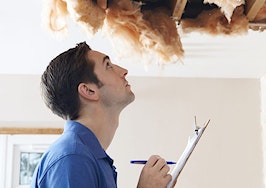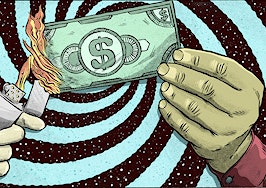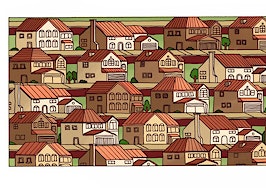The pricey housing market is making home flipping a tough investment, according to a new report from Attom Data Solutions. The average return on investment hit a three-year low in the first quarter of 2018.
“The 2018 housing market is a double-edged sword for home flippers,” said Daren Blomquist, senior vice president at Attom Data Solutions, in a release. “Rapidly rising home prices boosted by low available inventory of homes for sale or for rent are padding profits at the back end when flippers sell, but those same market realities are eroding flipping returns at the front end by forcing flippers to pay more to acquire homes to flip.”
A total of 48,457 homes were flipped over the first three months of the year, which represented 6.9 percent of all home sales — up from 5.9 percent last quarter, which matched the highest home flipping rate since 2012.
The average gross profit of flipped homes sold was $69,599, the highest amount ever recorded since ATTOM began tracking the data in 2000. However, due to the high costs on the front end, the high average gross profits turned into only a 47.8 percent return on investment, down from 48.9 percent last quarter and down from 50.3 percent in the first quarter of 2017.
More than half of the 136 metropolitan markets analyzed by the study found year-over-year decreases in home flipping activity. In Jacksonville, Florida, where the the rate decreased 7 percent, Alex Sifakis, president of real estate investment company JWB Real Estate Capital sees it as an opportunity for home flippers to move into a new market.
“The market is incredibly hot right now, making it very hard to find homes to flip — but there is an opportunity for flippers to move into the new construction market,” Sifakis said. “We will flip about 200 homes this year, but build about 400 new homes — the vast majority of those not in subdivisions but in older neighborhoods where we are buying tear-downs or long-vacant lots.”
Lin He, owner of the California-based real estate investment company Rebellion said he’s seeing a lot of investors engage the market cautiously.
“It doesn’t feel like a bubble yet, but the sky-high property values are definitely concerning,” he said in the release.
Despite that caution, there’s still seems to be many willing to take the risk, and it’s not all cash buyers. More than 35 percent of homes that were flipped were originally purchased with financing, the highest level since the third quarter of 2008. Part of that may also be Wall Street’s comfort with the direction of the market.
“We field multiple phone calls every week from institutional investors who want to work with us,” said Matt Humphrey, co-founder and CEO of LendingHome, a fix-and-flip lender, in the release. “Wall Street has become more comfortable with the fix-and-flip space because they now have access to four years of performance data, and they’ve actively watched the development of this asset class.”













